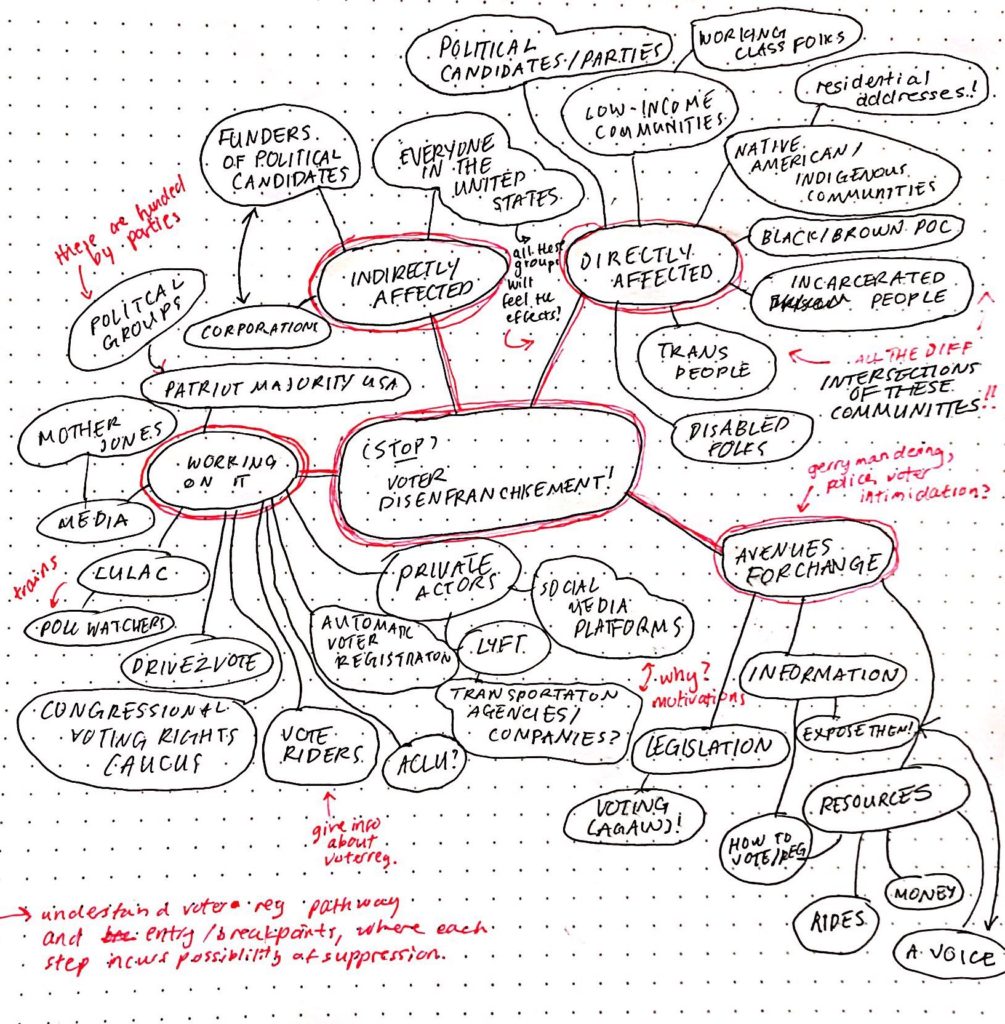Challenge: Organize to fight the efficacy of voter suppression practices across the United States
POV: Marginalized voter who is unable to vote or has their vote discounted through a number of methods (explored in interviews and background research)
Amp up the good: HMW harness the voters’ own energy and desire to participate in politics to fight suppression politics?
Remove the bad: HMW make sure people have equal access to voting and that all votes are counted equally
Explore the opposite: HMW make voting the easiest part of political participation?
Question an assumption: HMW entirely remove the in-person voting and obscure counting process?
Go after adjectives: HMW make voting fun instead of arduous and obscure?
ID unexpected resources: HMW make use of extant national information-keeping/data entry/data regulation systems to streamline this process?
Create an analogy from need or context: HMW make voting like a holiday? A celebration?
Play against the challenge: HMW make voting something that people want to do, and/or make counting everyone’s vote something that works in everyone’s interest?
Change a status quo: HMW make voting less difficult and inaccessible for marginalized people?
Break POV into pieces: HMW improve the conditions of people whose votes are suppressed and give them the material / social conditions to fight their oppression? HMW make voting more accessible? HMW make sure all votes are counted?
I will choose the most straightforward HMW, “HMW make voting less difficult and inaccessible for marginalized people?” as my main guiding HMW question, but my 10 divergent ideas for addressing this statement spawn from the ideation process for all of these different HMW statements. 1) Encourage absentee ballot voting. 2) Create a user-friendly website breaking down legal terminology and centralize information about voting rights and proper procedures to remember in each locality (source this information from local activists and update regularly with new info; crowdsourced database but presented in a way that is accessible to everyone). 3) Campaign to make election day a holiday. 4) Leverage current information-keeping systems to capture more voters; e.g. register voters whenever they visit the DMV to get a drivers’ license or apply for a passport or go for a doctor’s appointment; have information about registration expiry timelines on display. This would both make sure more people have access to registration by integrating it with other parts of their lives and making it so that people do not have to go out of their way to access registration or voting, as well as help to effect a cultural shift towards voting being a normal and expected part of every citizen’s life. 5) Employ nonpartisan, legally-trained clowns as poll watchers. 6) Donate directly to grassroots organizations like Four Directions and have those resources be redistributed to Native tribes in order to pay people within tribes to get trained so that knowledge can be a lasting part of the community. 7) Legal change: Institute a government position that consists of independent voting trainers that can be overseen by the secretary of state who provide training to poll workers or poll judges — again, nonpartisan! 8) Implement tracking numbers for absentee ballots so people can see where they went and what happened to them, working in conjunction with the idea to encourage absentee voting to avoid a lot of the pitfalls that in-person voting practices are susceptible to. 9) Work with community organizations like churches and community centers to help them create and publicize transportation and resource distribution during election seasons. 10) Institute a mandatory maximum wait time for election day and a mandatory minimum polling center per population per unit area policy across the U.S. (inspired by the international IDEO design card).


